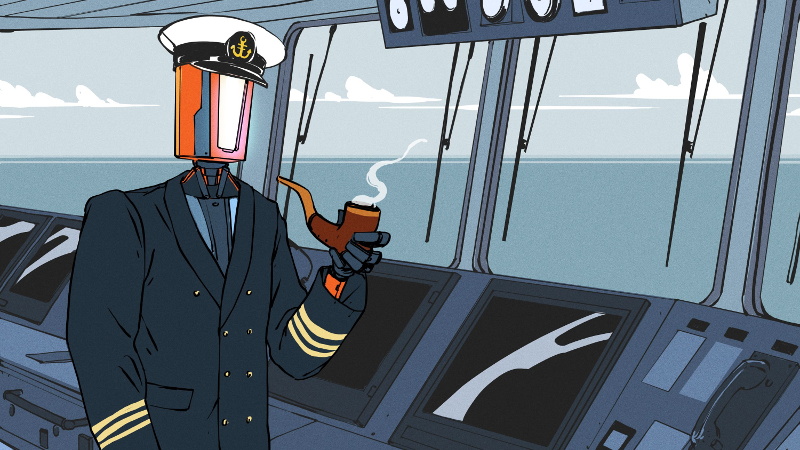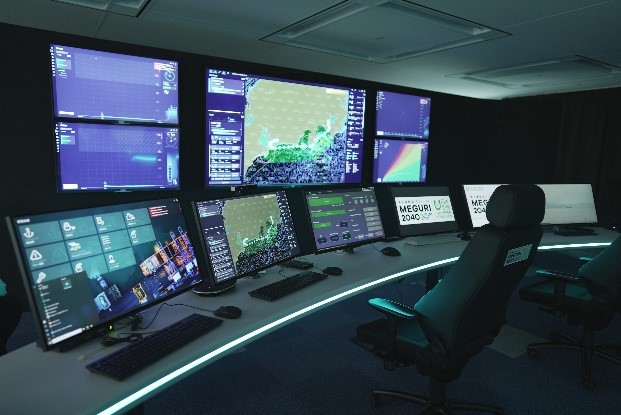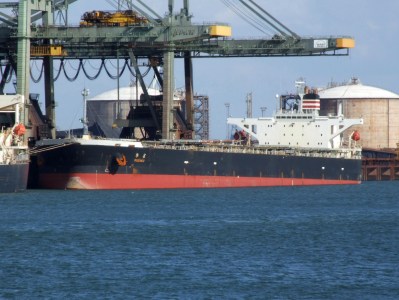
It is by no means an overstatement to say that life as we know it would grind to a halt without cargo ships. If any doubt remained about that fact, the last year and a half of supply chain woes put that to bed; we all now know just how much of the stuff we need — and sadly, a lot of the stuff we don’t need but still think we do — comes to us by way of one or more ocean crossings, on vessels specialized to carry everything from shipping containers to bulk liquid and solid cargo.
While the large and complex vessels that form the backbone of these globe-spanning supply chains are marvelous engineering achievements, they’re still utterly dependent on their crews to make them run efficiently. So it’s not at all surprising to learn that some shipping lines are working on ways to completely automate their cargo ships, to reduce their exposure to the need for human labor. On paper, it seems like a great idea — unless you’re a seafarer, of course. But is it a realistic scenario? Will shipping companies realize the savings that they apparently hope for by having fleets of unmanned cargo vessels plying the world’s oceans? Is this the right way to automate the freight?
Lights-Out Shipping
Details of the plan being proffered by shipping company NYK Lines are slim so far, limited to a few press releases with little in the way of technical discussion. But from what we gather, something like 30 shipping companies have formed a consortium called DFFAS, for “Designing the Future of Full Autonomous Ships.” Under the sponsorship of the Japanese government, they’ve built a Fleet Operation Center that will support the operation of crew-less cargo vessels. From the few photos released, the FOC certainly looks the business — sleek consoles, flatscreen monitors everywhere, subdued lighting, and seats for a few operators.

The operations center will provide support for vessels working the coastal trade routes up and down the Japanese archipelago, with a short test voyage scheduled for February of next year. The 236-nm run will take the MV Suzaku, an 85-m long container cargo vessel, from Tokyo Bay down the coast to the port in the city of Ise. There’s no word on how or if the ship has been retrofitted for the voyage, but chances are good that since she was built in 2019, she likely had all the latest navigational, communications, and computer gear installed.

What’s interesting about all this is the overall scale of the problem, both in terms of the ship and in terms of the route. The ship itself is rated at 749 gross tons — a maritime measurement of the overall internal volume of a ship — and is therefore a relatively small ship, at least compared to behemoths like transoceanic container vessels and supertankers. A smaller ship should be easier to control than a larger ship. A small ship like the Suzaku is also designed to operate close to shore, rather than venture out into the open ocean like the bigger vessels. This has pros and cons for an autonomous test: on the one hand, the test vessel will always be close enough to the FOC that low-latency, direct radio contact should be possible; on the other hand, unlike the open ocean, littoral routes like the one the test will be conducted over tend to be crowded with other ships.
In it for the Short Haul
Route selection for these tests also reveals a lot about the economic problems autonomous shipping is intended to solve. A large container ship may spend weeks on a voyage, over which time a lot can go wrong mechanically. Crews on these vessels are constantly performing repairs on equipment, and when there’s nothing to fix, there are always preventive maintenance tasks to work on. The deck crews of these vessels are always busy, too. Ocean-going container ships are especially labor-intensive; the constant vibration and motion of the ship require that crews check the lashings of containers regularly, to make sure none work themselves loose in transit.
There’s also the fact that long-haul vessels are already highly automated. The evidence for that is plain to see in any of the hundreds of vlogs that mariners post — just look for “container ship tour” in YouTube and you’ll find plenty to choose from. What I’ve noticed from watching these videos (and I’ve watched a lot of them; JeffHF and Chief MAKOi are among my favorites) is how empty these ships are, at least relative to their size and complexity. One very rarely sees many of the vlogger’s crewmates, and even accounting for camera-shyness or privacy concerns, there just don’t seem to be that many people needed to run one of these big ships.
In-shore shipping, though, seems like it might be a riper target for automation. Most of the tasks that automation would be bad at — performing maintenance on the ship, checking cargo — are less of a factor on voyages that have many legs with more frequent port calls. Automating the other stuff — navigation, steering the ship, and perhaps even shoreside operations — seems like it would have a bigger impact here.
Automation vs. Demographics
There also appears to be a social engineering aspect to the selection of in-shore shipping for NYK’s automation tests. Like other developed countries, Japan is facing a demographic crunch in a lot of industries, especially transportation, where the workforce is trending older overall. There are probably a lot of reasons for this trend, but it may be that in-shore shipping tends to attract older, more experienced workers, who might not want to take contracts that will result in months at sea away from their families. Mariner vlogs seem to support that; most of the crew members on the long-haul vessels tend to be on the young side.
So it would seem that in-shore rather than transoceanic shipping would present the biggest bang for the buck to shipping lines. But will it work? That remains to be seen, of course, but Japan appears to be placing a big bet on it. The timeline of the DFFAS project extends out to 2040, and lists a goal of 50% of domestic vessels being fully automated by that point. Between here and there, the consortium aims to have 10% of the domestic fleet automated by 2030, and even has a bullet point for extending some of the core technologies to oceangoing vessels within just a few years.
Setting goals like these are what drives innovation, and we applaud the effort. And in-shore, domestic shipping seems like the logical place to start, and may well bear fruit in the near future. But it seems a bit of a reach to completely replace the crews of larger oceangoing vessels, what with so many tasks that are best performed by skilled human hands. We suspect it’ll be a while before we see lights-out vessels plying these routes.
No comments:
Post a Comment